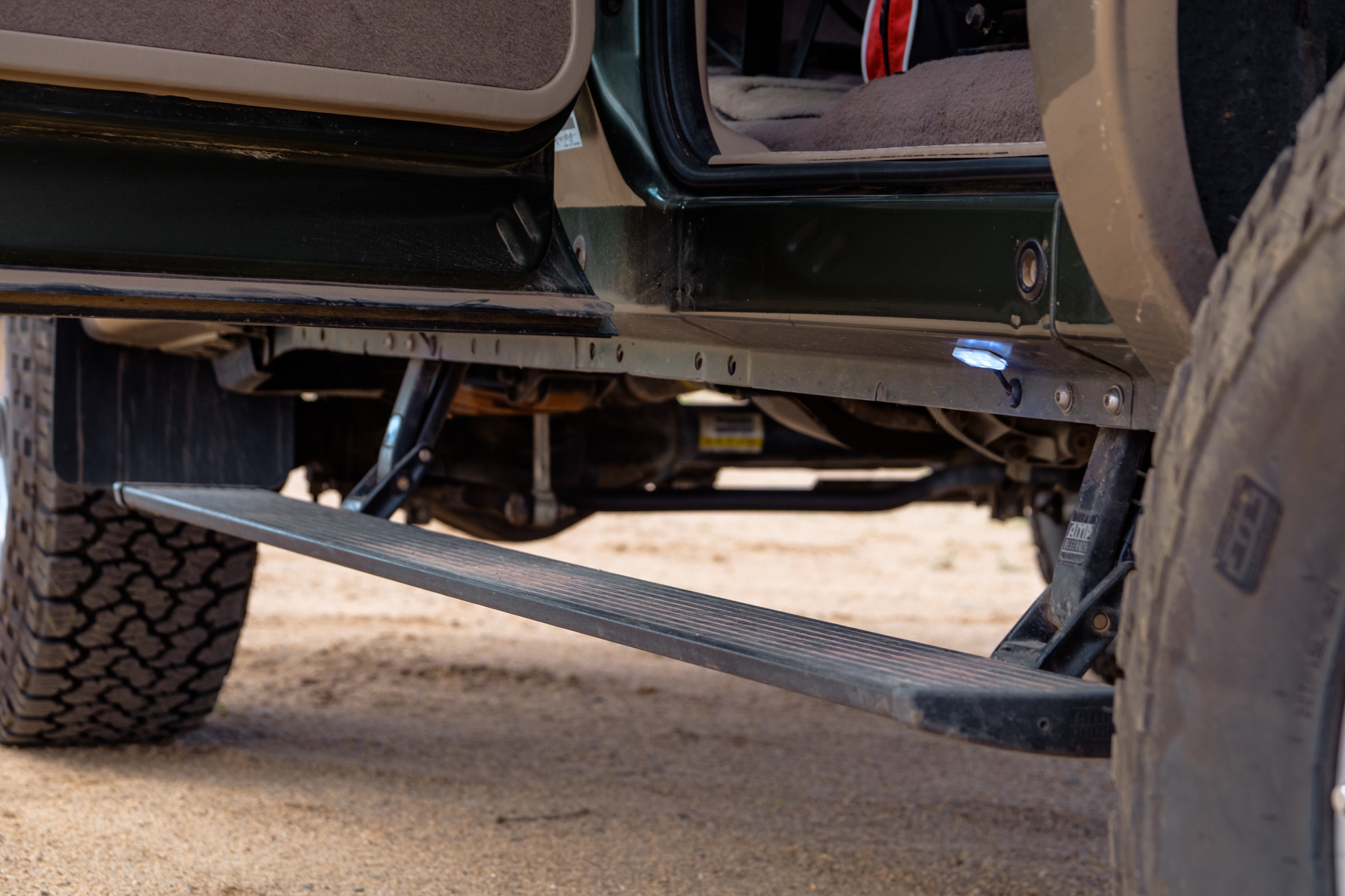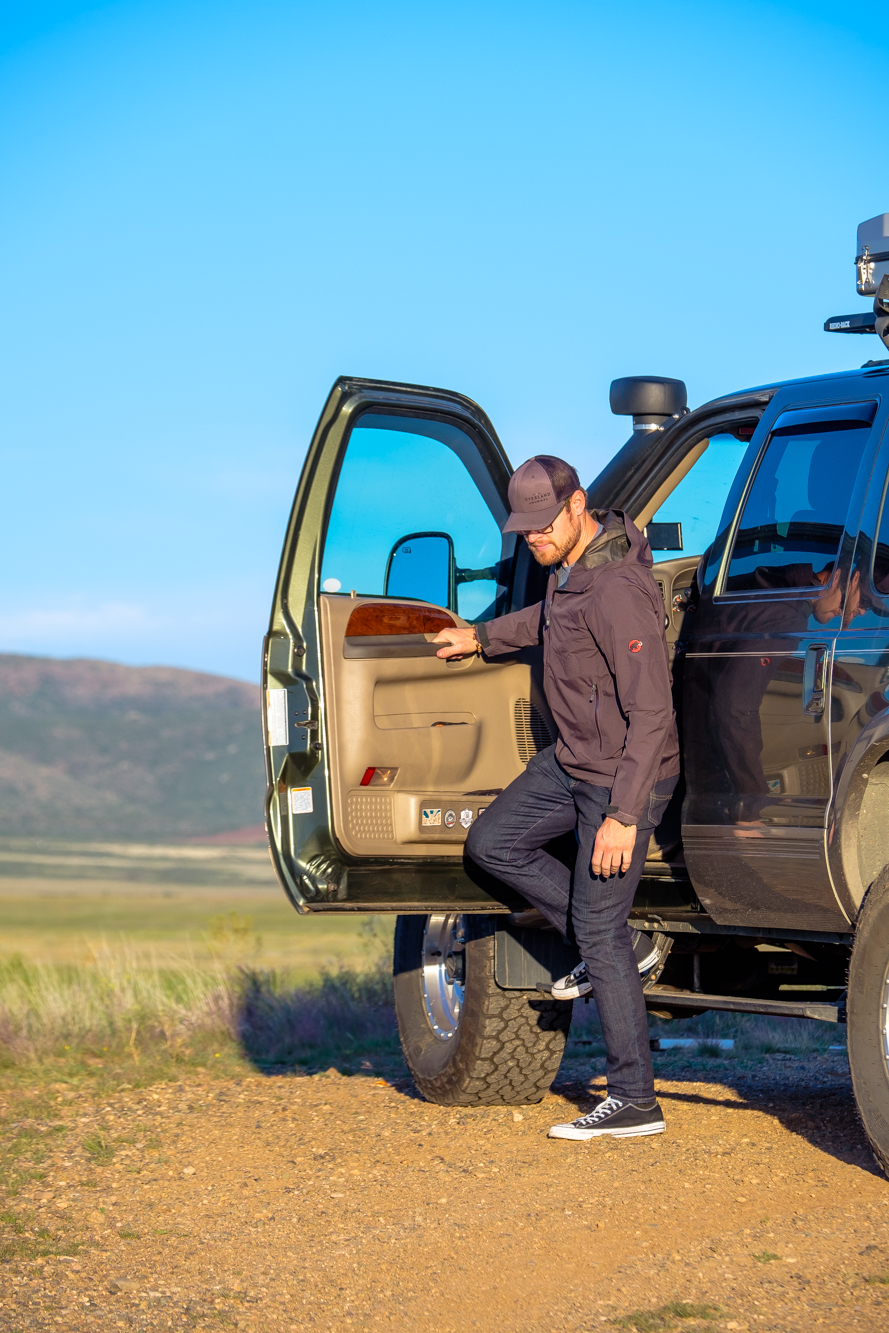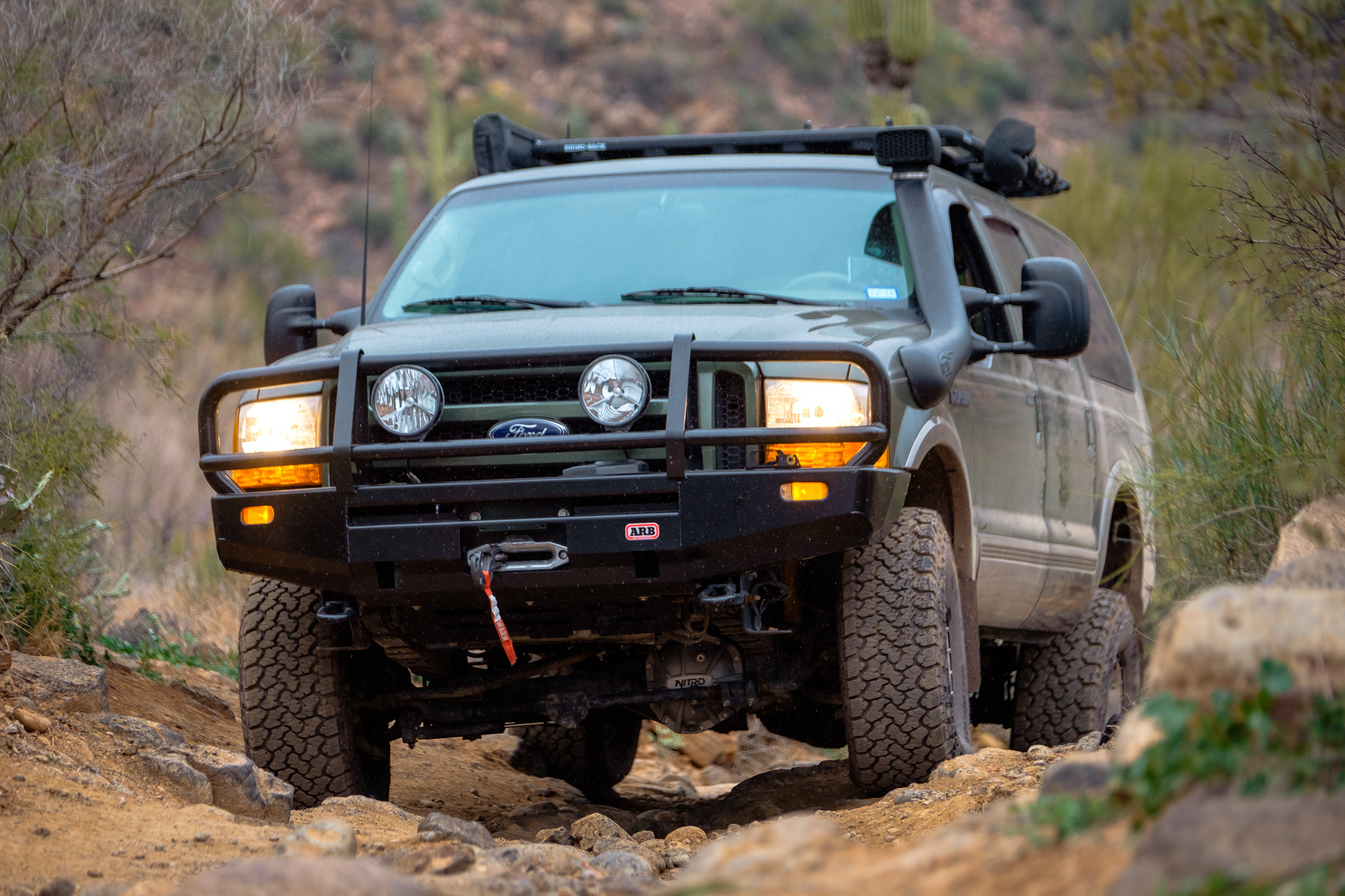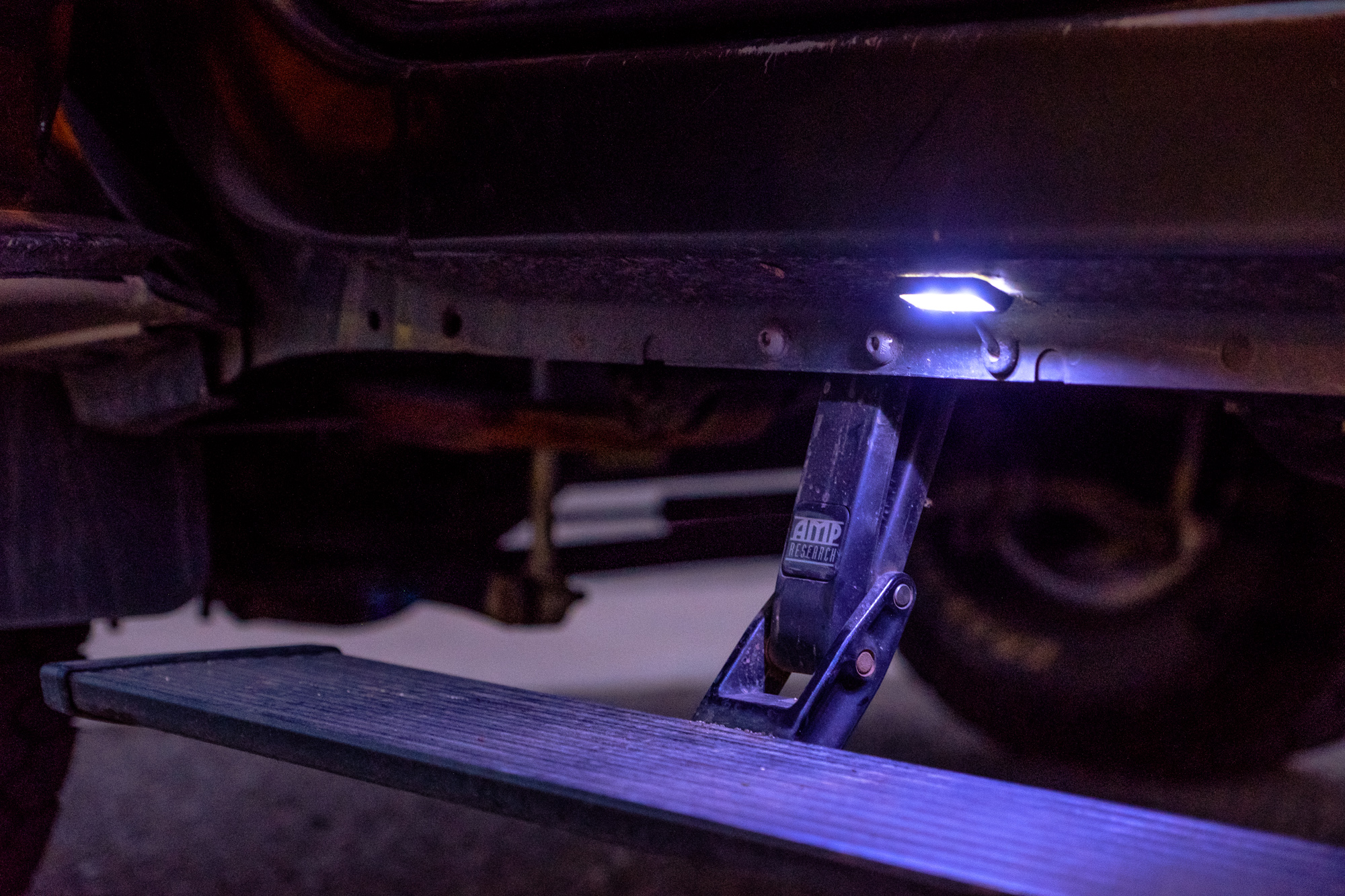The overland community certainly has its debates: Toyota versus Land Rover, wide tires versus tall skinny tires, roof tent versus ground tent and so much more, but there’s one thing that almost all of us can agree on, and that’s the removal of factory running boards. That’s because they significantly reduce the breakover angle and are usually the first thing to receive damage on the trail, often harming the vehicle in the process. Worse, many of these steps are tucked so close to the body that they offer little advantage—it’s no wonder why they quickly find their way to the rubbish bin.
Unfortunately, it’s not always as easy as just discarding your running boards and never looking back, a realization that struck me hard when my girlfriend’s mother fell onto an icy road while attempting to get into my Excursion. At that point, I had already been experiencing ankle and wrist pain myself from hopping in and out of the truck, so her fall was the straw that broke the camel’s back, and fortunately not her back. I hopped online and started searching for running boards that could stand up to off-road use, and wouldn’t reduce the truck’s breakover angle or get caught up on the trail. It didn’t take long to find a solution in the form of AMP Research’s PowerStep.

The Gist
AMP’s PowerSteps automatically deploy when a door is opened and retract up underneath the vehicle when the door closes. This makes them an ideal way to improve the function of your truck or SUV in day to day life without reducing its capability on the trail. We found the steps to be well made, with practical design elements and a clean look. They’re produced in the USA, and undergo strenuous testing in mud and salt, with temperatures ranging from -40° to 200°F. Although their long-term durability remains to be tested, we are pleased with every other aspect of their performance thus far.

The Details
AMP Research is all about making simple products to solve common sense problems, and the PowerStep is the embodiment of that ethos. They address the shortcomings of traditional running boards by utilizing the most obvious solution: being present when you need them, and retracting beneath the vehicle when you don’t.
“Finding the simple, functional solution to a complex design challenge is the goal of every AMP Research innovation. Thomas Edison remarked that invention is 1 percent inspiration and 99 percent perspiration. But before there’s either, there’s observation. The eyes of everyone at AMP Research are trained to look at everyday life, and envision new products that prove themselves in the marketplace.”
Installation of the AMP PowerSteps isn’t overwhelmingly difficult, but it’s certainly not a simple plug and play accessory either. The step is wired directly into each door’s sensors so that every time you open one, it triggers the electric motor on that side of the vehicle. This extends the armature linkage, thus deploying the PowerStep. When you close the door again, the sensor signals the step to retract, restoring your truck’s ground clearance while also “reducing drag,” a point that AMP Research makes note of even though we hardly think running boards will make that big of an impact on fuel economy. The official installation time estimates are between three and five hours, but it may take longer depending on your experience level and the complexity of your vehicle’s wiring system. We recommend checking out the free PDF instructions online before determining if you want to install them yourself or pay a professional to do it for you.

The PowerSteps are made right here in the USA from hollow channeled aircraft-grade aluminum, which reduces weight while making them sturdy enough to resist bending with up to 600 pounds of weight per side. They’re sealed in a black powder coat for corrosion resistance, which also gives them a clean look that blends in with the undercarriage of your truck or SUV. I especially loved that the coating used on top of the steps has some grit to it, which gives them excellent traction underfoot in all weather conditions, including ice and snow.

The extension and retraction cycles are smooth, with well-thought-out features like rubber pads to eliminate noise and vibration when the steps reach their stops in either the open or closed positions. Another nice touch is the lights; although not entirely necessary in places like cities, they were welcome additions in the backcountry on late night runs and camping trips. All of this was convenient and added to our enjoyment of the steps, but we were most curious if they would retain our vehicle’s breakover angle on the trail, and how they’d handle constant abuse from mud and corrugated roads.
Well, I can tell you they didn’t disappoint. The PowerSteps mounted on my Excursion tuck well up and out of the way of any obstacles, retracting even above the frame rails and bottoms of the doors which was much better than I had expected. This flush design is fabulous on the trail, but customers should be warned that it may interfere with existing modifications underneath the truck depending on their mounting locations. For example, my Excursion has an Extreme Outback Magnum air compressor and tank mounted on the frame, and although the steps cleared it, it was only by a fraction of an inch.

Durability was quite good as well. Throughout our few months of testing, we hammered away at the PowerSteps on rocky tracks, long dirt roads, and heavy corrugations without causing any cracks or signs of wear. In truth, I had expected as much from the heavy-duty linkage assemblies and weatherproof motors, but the hardiness of the exposed plastic gears caught me by surprise. Despite driving through mud, sand, and ice on various trips, and subjecting them to freezing temperatures in the Sierras and high heat in the desert, there has been zero perceptible impact on their performance—a little research uncovered why.

As it turns out, AMP Research tests their steps in temperatures up to 200°F, and down to -40°F, while also blasting them with salt, snow, and mud to make sure that they’ll function properly in harsh climates with poor road conditions. Of course, overlanding has a way of breaking products over the long haul so only time will tell how they endure the years. Thus far though, we’re impressed.
It’s also worth noting that AMP Research does include a 5-year, 60,000-mile limited warranty on the PowerStep, but their documentation is rather vague about what it actually covers. For example, it states that “These warranties do not cover any damage, defect, or malfunction caused by misuse, abuse, accident, improper installation, modification, improper or inadequate maintenance, or on-road and off-road hazards. Incidental and consequential damages are not recoverable under this warranty.” This sort of statement isn’t unusual among aftermarket companies, but it does leave a whole lot of wiggle room when it comes to what’s actually under warranty or not.
Overall, the AMP Research PowerStep is easily one of the best modifications I’ve made to my truck for daily life. I love that my ankles and wrist are no longer sore from hauling myself up into the cab and jumping to get back down, and I know my friends and family appreciate it even more. If you’re looking for a way to make using your vehicle easier without reducing its capability on the trail, I would recommend picking up a set of PowerSteps from AMP Research.
Price as tested: $1,399
To learn more, check out the AMP Research website here.


